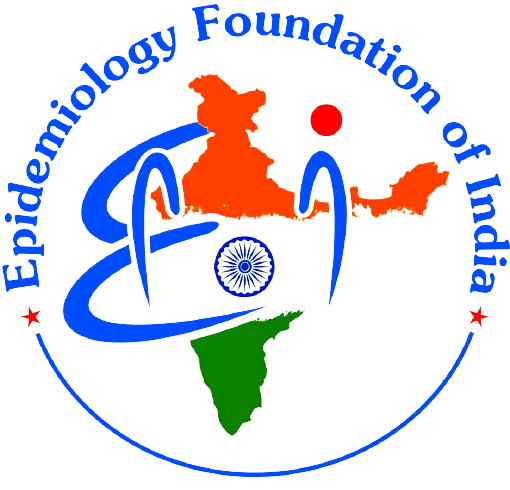Suicide risk among rural youths, a public health concern – Voicing the unvoiced
Downloads
Published
DOI:
https://doi.org/10.56450/JEFI.2024.v2i01.004Keywords:
Suicidal Behavior, Suicidal Ideation, Suicide, Suicide Attempts, Youths, RuralIssue
Section
License
Copyright (c) 2024 Dr. Manish RC, Dr. Renuka M, Dr. Kishor M, Dr. Rituparna Kundu

This work is licensed under a Creative Commons Attribution-NonCommercial-ShareAlike 4.0 International License.
Background: Youth transition from dependence to independence with fluid boundaries, facing challenges like anxiety and peer pressure despite good health. Prior suicide attempts stand out as a significant risk factor, highlighting its importance in the broader population. Aim & Objectives: This study aimed to assess suicidal risk prevalence among rural youths in Southern Karnataka and identify associated risk factors. Methods: This study employed population proportionate sampling of 15-24-year-olds from four villages of Sutturu, a rural field practice area of JSS Medical College, Mysuru for six months. Socio-demographic data were collected using a pre-tested proforma, while suicide risk was assessed via the SAFL app. Data analysis utilized IBM SPSS Version 25. Results: Of 239 participants, 35.2% were males and 64.8% females, with a majority aged 20-24. Notably, 41.2% of females attended school. Depression prevalence was high (65.2%), with 51% experiencing minimal depression, more so in males. Treatment-seeking for psychiatric issues was low, with varying suicide attempt rates. Conclusion: The study emphasizes significant associations between youth suicide risk and factors like prior attempts, family history, and psychiatric conditions, particularly among males aged 20-24. Lower educational attainment also correlates with increased risk, highlighting the multifaceted nature of this issue.Abstract
How to Cite
Author Biographies
Manish RC, JSS Medical College, JSS Academy of Higher Education and Research, Mysore, Karnataka
.
Renuka M, JSS Medical College, JSS Academy of Higher Education and Research, Mysore, Karnataka
.
Kishor M, JSS Medical College, JSS Academy of Higher Education and Research, Mysore, Karnataka
.
Rituparna Kundu, JSS Medical College, JSS Academy of Higher Education and Research, Mysore, Karnataka
.
Youth | UNESCO [Internet]. [cited 2023 Jun 29]. Available from: https://www.unesco.org/en/youth. Last assessed on 25/03/2024. World Health Organization. National suicide prevention strategies: progress, examples and indicators [Internet]. Geneva: World Health Organization; 2018 [cited 2023 Jun 30]. Available from: https://apps.who.int/iris/handle/10665/279765 .Last assessed on 25/03/2024. Suicide Data and Statistics | Suicide Prevention | CDC [Internet]. Available from: https://www.cdc.gov/suicide/suicide-data-statistics.html . Last assessed on 25/03/2024. Minds United for Health Sciences and Humanity Trust, 2020, SAFL: Self Assessment & Help - Apps on Google Play [Internet]. Available from: https://play.google.com/store/apps/details?id=com.suicide.helpline&hl=en&gl=IN&pli=1 . Last assessed on 25/03/2024. Zygo M, Pawłowska B, Potembska E, Dreher P, Kapka‐Skrzypczak L. Prevalence and selected risk factors of suicidal ideation, suicidal tendencies and suicide attempts in young people aged 13–19 years. Annals of Agricultural and Environmental Medicine. 2019;26(2):329–36. Zakharov S, Navrátil T, Pelclová D. Suicide attempts by deliberate self-poisoning in children and adolescents. Psychiatry Research [Internet]. 2013;210(1):302–7. Shojaei A, Moradi S, Alaeddini F, Khodadoost M, Barzegar A, Khademi A. Association between suicide method, and gender, age, and education level in Iran over 2006-2010. Asia-Pacific Psychiatry [Internet]. 2013;6(1):18–22. Næss EO, Mehlum L, Qin P. Marital status and suicide risk: Temporal effect of marital breakdown and contextual difference by socioeconomic status. SSM, Population Health [Internet]. 2021;15:1-8 Salzinger S, Rosario M, Feldman RS, Ng-Mak D. Adolescent suicidal Behavior: associations with preadolescent physical abuse and selected risk and protective factors. Journal of the American Academy of Child and Adolescent Psychiatry [Internet]. 2007;46(7):859–66. Brown JF, Cohen P, Johnson JG, Smailes E. Childhood Abuse and Neglect: Specificity of effects on adolescent and young adult depression and Suicidality. Journal of the American Academy of Child and Adolescent Psychiatry [Internet]. 1999;38(12):1490–6. Riggs S, Alario AJ, McHorney CA. Health risk behaviors and attempted suicide in adolescents who report prior maltreatment. The Journal of Pediatrics [Internet]. 1990;116(5):815–21. Zoroğlu S, Tüzün Ü, Şar V, Tutkun H, Savaçs HA, Öztürk M, et al. Suicide attempt and self‐mutilation among Turkish high school students in relation with abuse, neglect and dissociation. Psychiatry and Clinical Neurosciences [Internet]. 2003;57(1):119–26
References





